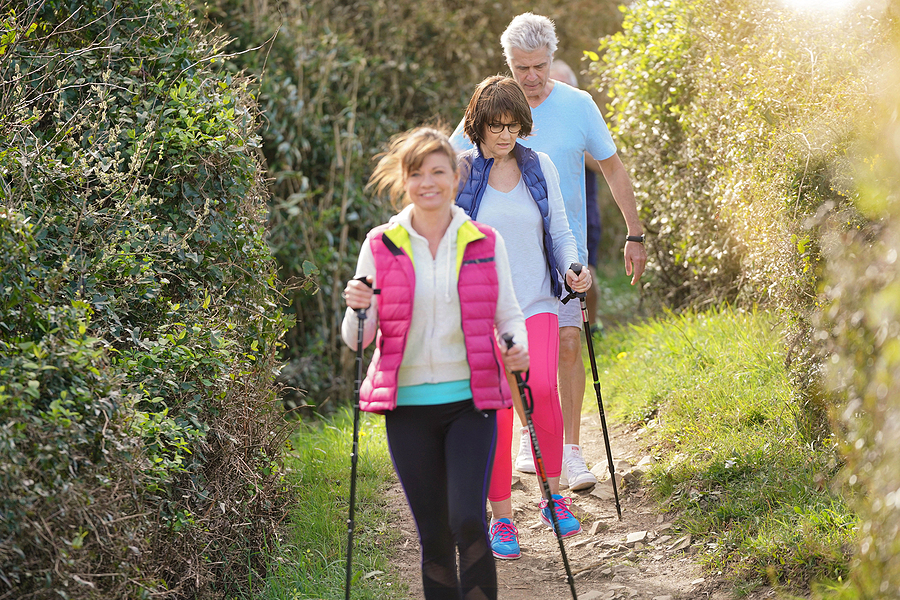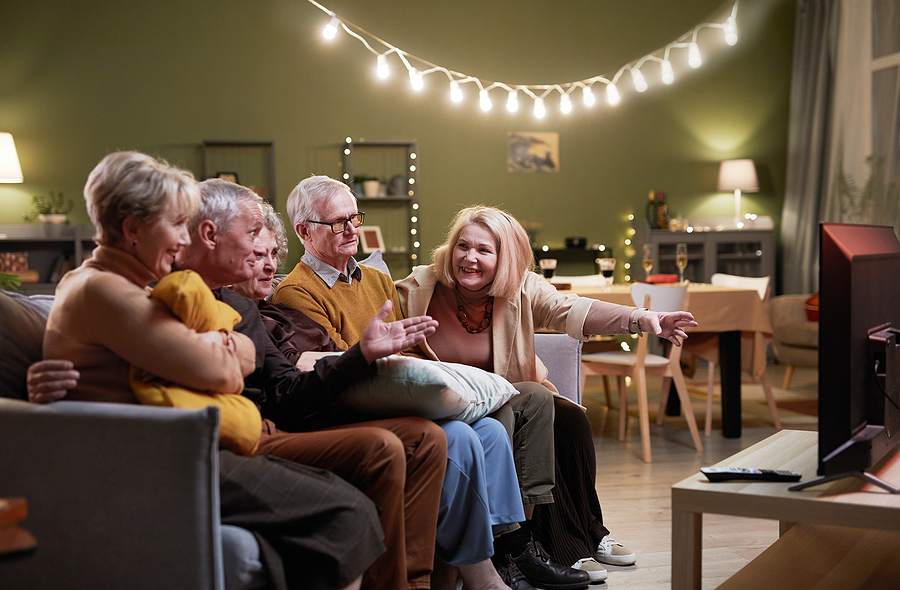We all know that walking is great exercise but, for many of us, back or joint problems can make it hard to walk as far as we’d like — and that’s where Nordic walking can help.
Nordic walking uses specially designed poles to turn walking into a full-body workout. The poles help reduce pressure on joints, allowing you to feel lighter on your feet and walk faster and further, all while gaining strength and improving posture. This makes it a great senior exercise, and an ideal way to spend an afternoon enjoying the outdoors.
How Nordic Exercise Started
The concept of walking with poles is not new. For decades — both in Finland and elsewhere — hikers have used ski poles to find their rhythm and help with balance. In 1996, Tuomo Jantunen, the Finnish Central Association for Recreational Sports and Outdoor Activities director, began working on developing poles specifically for walking. He got in touch with a Finnish company called Excel and, together, developed around 30 prototypes. In 1997, the first Nordic walking poles were released.
What Makes Nordic Walking Poles Special?
Nordic walking poles differ from original ski poles in four important ways:
- 1. The “feet” of the poles have a forward angle.
- 2. The poles were shortened to compensate for the shorter stride of a user without skis.
- 3. The poles have straps that allow for a more relaxed grip which as a result is easier on shoulder muscles.
- 4. The poles come with a rubber “bootie” attachment that can be put on for walking on hard surfaces, such as sidewalks and asphalt paths.
How to Nordic Walk
Nordic walking is simply regular walking with specially designed poles (and a few tweaks). Here are several things to keep in mind.
- Lean slightly forward and keep your shoulders down and relaxed.
- Begin each step with the heel touching the ground and rolling forward to the ball and toe area.
- Take longer strides than usual.
- Keep a light grip on the poles.
It’s helpful to see Nordic walking in action, and this two-and-a-half minute video, produced by the AARP, helps pick up the proper technique.
Selecting Your Nordic Walking Poles
You can spend anywhere from $20 to more than $200 on Nordic walking poles, but $50 is generally considered a good starting point for a quality pair. When purchasing poles, you can buy adjustable poles that are collapsible, making it easier to take them with you. Critics of adjustable poles, however, claim they are not as durable as one-piece models. You can also purchase poles based on your height, see this helpful guide by the Nordic Academy for more detailed information on how to measure.
Nordic walking poles are typically made of either aluminum or carbon fiber. Aluminum poles are heavier and more rigid, which means less give and more vibration felt in the arms and upper body. Carbon fiber poles are lighter and more flexible, which makes them more durable and also more comfortable for some. Carbon fiber poles are generally more expensive than aluminum.
Finally, if you plan to walk on hard surfaces, make sure the poles you select have rubber booties that can be attached to the poles.
Great Nordic Walking Poles Currently on the Market
- FitLife: This is a reasonably priced pair that is available on Amazon. This pole meets all of the criteria mentioned above and is highly rated.
- Excel: Made from one-piece carbon fiber, this option is more expensive but is extremely durable.
- Montem: A great middle-priced option, these Nordic walking poles are top-rated by The New York Times Wirecutter product review website
The Benefits of Nordic Walking
Nordic walking is gaining ground quickly as a great exercise for seniors for two reasons: It enables those with joint or balance issues to feel lighter on their feet and walk further. It can also help anyone turn walking into a full-body workout while burning more calories and increasing strength
“When you walk without poles, you activate muscles below the waist. When you add Nordic poles, you activate all of the muscles of the upper body as well,” explained cardiologist Aaron Baggish in an article for Harvard Health Publishing. “You’re engaging 80% to 90% of your muscles, as opposed to 50%, providing a substantial calorie-burning benefit.”
In an article for the Arthritis Foundation’s website, exercise physiologist and certified Nordic walking instructor Martica Heaner had this to add: “For people with joint injuries in their lower bodies or lower back, trekking poles can help absorb some of the landing impact with each step, particularly when going downhill. The poles help keep the body upright and symmetrical, improving balance.”
Senior Exercises and More at The Oaks at Denville
At The Oaks at Denville, we promote wellness every day, in everything we do through our award-winning LivWell program. In addition to our state-of-the-art fitness center, you’ll find a heated indoor pool and plenty of walking trails on our Denville, New Jersey, campus. Interested in taking a tour? Use this quick form to schedule a visit. Whether you like working out or enjoy happy hour with friends (or both!) you’ll find it in our active senior living community.



